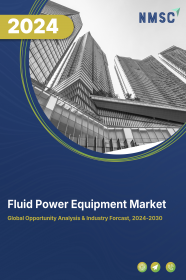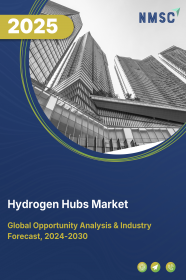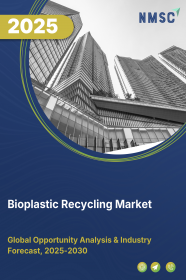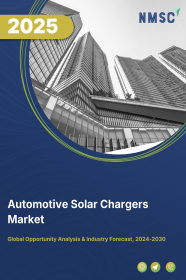
Fluid Power Equipment Market by Type (Hydraulic and Pneumatic), by Component (Pumps, Motors, Valves, Cylinder, Steel Tube and Compression Fitting, Accumulators and, Accessories), and by Application (Construction, Automotive, Aerospace & Defense, Oil & Gas, Food Processing, Packaging, and Others) – Global Opportunity Analysis and Industry Forecast, 2024 – 2030
US Tariff Impact on Fluid Power Equipment Market
Trump Tariffs Are Reshaping Global Business
Fluid Power Equipment Market Overview
The global Fluid Power Equipment Market size was valued at USD 44.39 billion in 2023 and is predicted to reach USD 68.26 billion by 2030 with a CAGR of 6.3% from 2024 to 2030. The fluid power equipment market refers to industrial tools and components that utilize fluids such as liquid and gas to transfer power from one place to another. These systems predominantly operate via two methods hydraulic and pneumatic. Hydraulic systems employ fluids such as oil for power transmission, while pneumatic systems utilize gas, especially compressed air. There are various advantages provided by the fluid power equipment system such as spark free, making them safer to use and suitable for a broader range of applications, including chemical plants and mines. Additionally, these fluid power equipment offers less noise and zero-emission, that is safer for the working environment. Companies in this sector thrive on delivering tailored solutions, integrating technology, managing global supply chains, ensuring regulatory compliance, and providing essential aftermarket services. Their emphasis on innovation, quality, and customer engagement fuels improvements in operational efficiency and performance across various industries.
Market Dynamics and Trends
The rapidly increasing urbanization have resulted in a huge number of construction activities, which leads to the demand for hydraulic fluid equipment in construction vehicles including dragline excavator, bulldozers, graders, and wheel tractor scraper. According to the World Bank data 2023, over 50% of the global population is currently living in urban areas and by 2045, this urban population is projected to soar to an astounding 6 billion people.
The rapid growth of urbanization fuels demand for efficient infrastructure and manufacturing and it is increasing the need for reliable fluid power equipment in various industries such as construction and transportation. Moreover, the increasing aerospace & defense spending in many countries fuels the demand for fluid power equipment. As aerospace and defense sector utilizes fluid power equipment for various applications such as aircraft landing gear, flight control systems, and hydraulic actuators.
As per PwC report 2024, the aerospace and defense industry achieved a record-breaking revenue of USD 829 billion in 2023, marking an increase of 11% over the previous year and a 4% rise above the previous record set in 2019. The strong performance in 2023 is driving demand for fluid power equipment, offering growth opportunities for manufacturers in the sector.
Furthermore, the continuous investments in the oil & gas industry are fueling robust growth in the fluid equipment market. This growth is primarily driven by increasing energy demand, ongoing infrastructure development, stricter environmental regulations, rapid digitalization, emerging markets, and the integration of renewable energy sources.
As per International Energy Agency (IEA) report 2023, the global investments in oil & gas exploration, extraction, and production reached their highest levels since 2015, growing 11% year-over-year to USD 528 billion in 2023. However, the high initial upfront cost and the lack of skilled personnel for operating fluid power equipment are hindering the growth of the fluid power equipment industry.
On the contrary, the integration of artificial intelligence (AI) and electronic controls within fluid power systems enhances precision in movements, facilitates condition monitoring, and enables predictive maintenance. This development is opening up future growth opportunities in the market.
For instance, in February 2024, Ansys launched an AI-based simulation platform that aims to help various industries including automotive, aerospace, and electronics, to innovate faster, reduce costs, and bring better products to the market. This helps to optimize fluid power systems for energy efficiency by analyzing data from sensors and other sources.
Market Segmentations and Scope of the Study
The fluid power equipment report is segmented on the basis of type, component, application, and region. On the basis of type, the market is divided into hydraulic and pneumatic. On the basis of component, the market is classified into pumps, motors, valves, cylinder, steel tube and compression fitting, accumulators, and accessories. On the basis of application, the market is segmented into construction, automotive, aerospace & defense, oil & gas, food processing, packaging, and others. Regional breakdown and analysis of each of the aforesaid segments include regions comprising North America, Europe, Asia-Pacific, and Row.
Geographical Analysis
North America dominates the fluid power equipment market and is expected to continue its dominance during the forecast period. This is attributed to the factors such as the presence of large oil & gas industry in countries such as the U.S. and Canada that uses various fluid power equipment including drill floor hydraulics, ballast control system, deck crane systems, and motion compensation systems for numerous industrial operations.
As per the Canadian Association of Petroleum Producers (CAPP) report 2024, the oil & gas industry investment is expected to increase 2.56% from 2023 to 2024.The expansion of the oil & gas sector is boosting demand for fluid power equipment, powering the Fluid power equipment growth market.
Moreover, the presence of key market players such as Parker Hannifin, Moog Inc., and others adopting hydraulic and pneumatic equipment for various activities in the construction and agriculture sectors, is driving significant growth in the hydraulic equipment market in the region.
For instance, in January 2022, Moog Inc. collaborated with Doosan Bobcat and launched world's first all-electric compact track loader, the Bobcat T7X. for agriculture and construction sector. It aims to advance the fluid power market towards sustainable and efficient solutions such as zero emissions, reduced noise, and improved safety while maintaining the power and performance of traditional diesel-hydraulic machine.
On the other hand, Asia-Pacific is considered fastest growing region in the fluid equipment industry. This is due to continuous growth of manufacturing sector in countries such as China, India and Japan. According to Invest India report 2024, the manufacturing sector accounted for 17% of the GDP in 2023 and it is projected to reach 25% of the GDP by 2025. The expanding manufacturing sector is enhancing demand for advanced fluid equipment, that stimulates innovation and market growth.
Furthermore, the growth of the automotive industries in countries such as China, India, and Japan are creating substantial demand for fluid power equipment as it helps to enhance the manufacturing efficiency, vehicle performance, and sustainability through automation, braking, suspension, and advanced processes.
For example, in January 2024, the combined production of passenger vehicles, three-wheelers, two-wheelers, and quadricycles in India surged by 23% compared to December 2023. The rise in production across various vehicle categories is driving the fluid power equipment industry.
Competitive Landscape
Various market players operating in the fluid power equipment sector includes Daikin Industries Ltd., Bosch Rexroth AG, Danfoss, Eaton Corporation plc., Festo Inc., Parker Hannifin Corp., Linde Hydraulics GmbH & Co., HYDAC International GmbH., Kawasaki Heavy Industries Ltd., Altrad Sparrows, and others. These market players continue to adopt various market development strategies including product launches and acquisition to maintain their dominance in the fluid power equipment industry.
For instance, in April 2024, Bosch Rexroth launched drive systems for hydrogen filling station compressors in the power range between 10 and 280 kW that aims to enhance the fluid power market by advancing hydrogen infrastructure with scalable and efficient compressor solutions.
Additionally, in April 2024, Kawasaki Heavy Industries introduced a new Pattern Change Valve aimed at improving the efficiency and performance of a range of industrial uses, adjust to various operating conditions and is suitable for use in a variety of industries such as power generation, oil & gas, and chemical processing. This new pattern change valve enhances the fluid power market with its adaptable efficiency across multiple industrial sectors.
Furthermore, in July 2022, Altrad acquired Sparrows Group to enhance Altrad’s service portfolio and further diversified its presence across multiple sectors, particularly in the high-growth renewables market.
Key Benefits
-
The report provides quantitative analysis and estimations of the fluid power equipment market from 2024 to 2030, which assists in identifying the prevailing market opportunities.
-
The study comprises a deep-dive analysis of the current and future market trends to depict prevalent investment pockets in the market.
-
Information related to key drivers, restraints, and opportunities and their impact on the market is provided in the report.
-
Competitive analysis of the key players, along with their market share is provided in the report.
-
SWOT analysis and Porters Five Forces model is elaborated in the study.
-
Value chain analysis in the market study provides a clear picture of roles of stakeholders.
Fluid Power Equipment Market Key Segments
By Type
-
Hydraulic
-
Pneumatic
By Component
-
Pumps
-
Motors
-
Valves
-
Cylinder
-
Steel Tube and Compression Fitting
-
Accumulators
-
Accessories
By Application
-
Construction
-
Automotive
-
Aerospace & defense
-
Oil & Gas
-
Food Processing
-
Packaging
-
Others
By Region
-
North America
-
The U.S.
-
Canada
-
Mexico
-
-
Europe
-
The UK
-
Germany
-
France
-
Italy
-
Spain
-
Denmark
-
Netherlands
-
Finland
-
Sweden
-
Norway
-
Russia
-
Rest of Europe
-
-
Asia-Pacific
-
China
-
Japan
-
India
-
South Korea
-
Australia
-
Indonesia
-
Singapore
-
Taiwan
-
Thailand
-
Rest of Asia-Pacific
-
-
RoW
-
Latin America
-
Middle East
-
Africa
-
REPORT SCOPE AND SEGMENTATION:
|
Parameters |
Details |
|
Market Size in 2023 |
USD 44.39 Billion |
|
Revenue Forecast in 2030 |
USD 68.26 Billion |
|
Growth Rate |
CAGR of 6.3% from 2024 to 2030 |
|
Analysis Period |
2023–2030 |
|
Base Year Considered |
2023 |
|
Forecast Period |
2024–2030 |
|
Market Size Estimation |
Billion (USD) |
|
Growth Factors |
|
|
Countries Covered |
28 |
|
Companies Profiled |
10 |
|
Market Share |
Available for 10 companies |
|
Customization Scope |
Free customization (equivalent to up to 80 working hours of analysts) after purchase. Addition or alteration to country, regional, and segment scope. |
|
Pricing and Purchase Options |
Avail customized purchase options to meet your exact research needs. |
KEY PLAYERS
-
Daikin Industries Ltd.
-
Bosch Rexroth AG
-
Danfoss
-
Eaton Corporation plc.
-
Festo Inc.
-
Parker Hannifin Corp.
-
Linde Hydraulics GmbH & Co.
-
HYDAC International GmbH.
-
Kawasaki Heavy Industries Ltd.
-
Altrad Sparrows

















 Speak to Our Analyst
Speak to Our Analyst



















